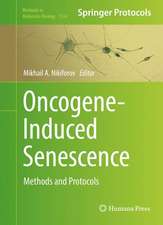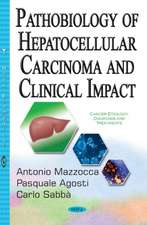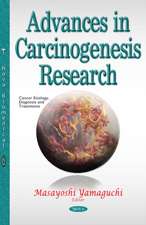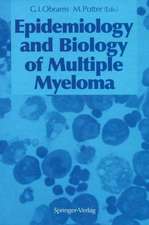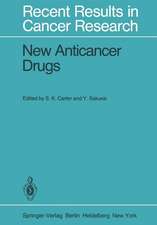Electropotentials in the Clinical Assessment of Breast Neoplasia: ESO Monographs
Editat de J Michael Dixonen Limba Engleză Paperback – 8 dec 2011
Din seria ESO Monographs
- 5%
 Preț: 711.52 lei
Preț: 711.52 lei - 5%
 Preț: 711.52 lei
Preț: 711.52 lei - 5%
 Preț: 709.14 lei
Preț: 709.14 lei - 5%
 Preț: 718.65 lei
Preț: 718.65 lei - 5%
 Preț: 710.23 lei
Preț: 710.23 lei - 5%
 Preț: 706.97 lei
Preț: 706.97 lei - 5%
 Preț: 706.97 lei
Preț: 706.97 lei - 5%
 Preț: 711.88 lei
Preț: 711.88 lei - 5%
 Preț: 712.60 lei
Preț: 712.60 lei - 5%
 Preț: 714.06 lei
Preț: 714.06 lei - 5%
 Preț: 709.51 lei
Preț: 709.51 lei - 5%
 Preț: 706.20 lei
Preț: 706.20 lei - 5%
 Preț: 707.69 lei
Preț: 707.69 lei - 5%
 Preț: 708.41 lei
Preț: 708.41 lei - 5%
 Preț: 710.23 lei
Preț: 710.23 lei - 5%
 Preț: 714.06 lei
Preț: 714.06 lei - 5%
 Preț: 707.69 lei
Preț: 707.69 lei - 5%
 Preț: 1088.39 lei
Preț: 1088.39 lei - 5%
 Preț: 1089.85 lei
Preț: 1089.85 lei - 5%
 Preț: 713.70 lei
Preț: 713.70 lei - 5%
 Preț: 710.79 lei
Preț: 710.79 lei - 5%
 Preț: 1087.31 lei
Preț: 1087.31 lei - 5%
 Preț: 707.69 lei
Preț: 707.69 lei - 5%
 Preț: 710.06 lei
Preț: 710.06 lei - 5%
 Preț: 363.24 lei
Preț: 363.24 lei - 5%
 Preț: 709.87 lei
Preț: 709.87 lei - 5%
 Preț: 715.35 lei
Preț: 715.35 lei - 5%
 Preț: 709.87 lei
Preț: 709.87 lei - 5%
 Preț: 1094.08 lei
Preț: 1094.08 lei - 5%
 Preț: 712.46 lei
Preț: 712.46 lei - 5%
 Preț: 710.43 lei
Preț: 710.43 lei - 5%
 Preț: 718.29 lei
Preț: 718.29 lei - 5%
 Preț: 359.60 lei
Preț: 359.60 lei -
 Preț: 389.49 lei
Preț: 389.49 lei
Preț: 707.69 lei
Preț vechi: 744.93 lei
-5% Nou
Puncte Express: 1062
Preț estimativ în valută:
135.42€ • 144.81$ • 112.91£
135.42€ • 144.81$ • 112.91£
Carte tipărită la comandă
Livrare economică 17 aprilie-01 mai
Preluare comenzi: 021 569.72.76
Specificații
ISBN-13: 9783642799969
ISBN-10: 3642799965
Pagini: 88
Ilustrații: VII, 74 p.
Dimensiuni: 210 x 277 x 5 mm
Greutate: 0.22 kg
Ediția:Softcover reprint of the original 1st ed. 1996
Editura: Springer Berlin, Heidelberg
Colecția Springer
Seria ESO Monographs
Locul publicării:Berlin, Heidelberg, Germany
ISBN-10: 3642799965
Pagini: 88
Ilustrații: VII, 74 p.
Dimensiuni: 210 x 277 x 5 mm
Greutate: 0.22 kg
Ediția:Softcover reprint of the original 1st ed. 1996
Editura: Springer Berlin, Heidelberg
Colecția Springer
Seria ESO Monographs
Locul publicării:Berlin, Heidelberg, Germany
Public țintă
ResearchCuprins
Underlying Mechanisms Involved in Surface Electrical Potential Measurements for the Diagnosis of Breast Cancer: An Electrophysiological Approach to Cancer Diagnosis.- A History of Direct Current Measurement as it Relates to Tissue Proliferation.- Initial Preclinical Experiments with the Electropotential Differential Diagnosis of Mammary Cancer.- Dedicated Systems for Surface Electropotential Evaluation in the Detection and Diagnosis of Neoplasia.- Is There a Need for a New Detection Technique for Breast Cancer?.- Breast Biophysical Examination (BBE): Potential Applications in Clinical Practice.- Use of Non-Directed (Screening) Arrays in the Evaluation of Symptomatic and Asymptomatic Breast Patients.- The Value of BBE in the Assessment of Breast Lesions.- Multicentre Clinical Trials Evaluating the Breast Biophysical Examination in the Assessment of Breast Disease.
Textul de pe ultima copertă
Although cancer cells differ in many ways from the cells of the host from which they arise, it has proved difficult to exploit these differences to improve diagnosis and treatment of solid malignancy. It has been known for some time that there are differences in the surface electrical potential of normal and malignant cells but until recently there have been no mechanisms available to measure these differences. With advances in electrode technology and the use of microprocessors to control and record direct current, it has proved possible to measure the differences in potentials to normal and malignant tissues. These differences can be measured at the skin surface of organs such as the breast. This book reports early results on measuring the skin potential of patients with benign and malignant breast disease and indicates that this technique could have considerable clinical impact. Differences in skin potential are demonstrated in both symptomatic and screened patients with breast cancer. Further investigation of this new non-invasive technique is clearly warranted.






